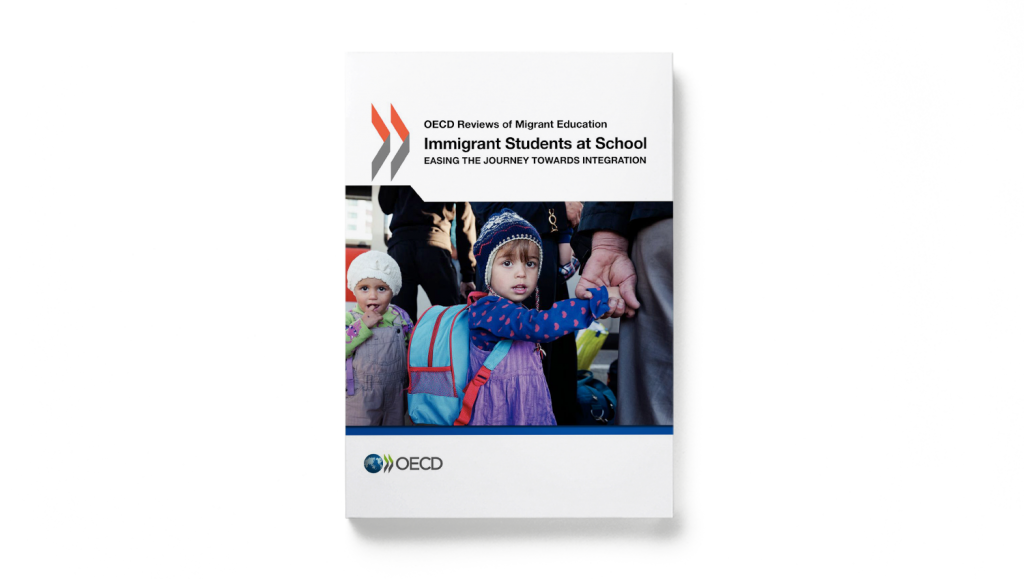New report from OECD on the integration of migrant students in schools

The OECD Directorate for Education and Skills has drafted a new report titled ‘Immigrant Students at School. Easing the Journey towards integration’ (2015). The report draws on analyses of the OECD Programme for International Student Assessment (PISA) data, and is part of the ‘OECD Review of Migrant Education’ series of publications.
The study first concludes that the difficulties immigrant students experience in terms of their educational performance can be explained in part by the socioeconomic circumstances they face. For instance, low performance of students in PISA is more strongly associated with the concentration of socioeconomically disadvantaged children in schools than with large numbers of immigrants who are non-native speakers in educational institutions. At the same time, a high concentration of socioeconomic disadvantage also increases the gap in test scores between immigrant and non-immigrant students. Across OECD countries, clustering disadvantaged immigrants in ‘enclave schools’ was found to be particularly prevalent in Greece and Italy.
In addition to the effects of the socioeconomic inequalities, educational attainment can be affected by the lack of host country language proficiency and personal attitudes towards education among others. On average, 64 % of first-generation immigrant students and 41 % of second-generation immigrant students speak a language at home that is different from the language in which the PISA 2012 test was conducted. This subsequently leads to low performance in reading: in fact, once the language students speak at home is taken into account, the performance gap decreases substantially. According to the OECD report, education systems struggle to provide adequate language training which is necessary for immigrants to succeed: on average only around 18 % of immigrant students have at least two hours of language training per week to improve their skills in the test language across the OECD countries.
Thus, the way in which education systems accommodate migration has an immense impact on whether immigrants can be successfully integrated into their host communities. The variation of country performance differences between immigrant and native students (even after accounting for socioeconomic status) suggests that education policies can both reduce and reinforce the effects of the initial disadvantages. For instance, the German education system improved the mathematics performance of second generation immigrant students by 46 points during the period 2003-2012, the equivalent of one year of schooling. The most detrimental school-level practices were found to be grade repetition and tracking.
In addition, the OECD study examines immigrant students’ aspirations and attitudes. Already facing significant academic difficulties, migrant students in Belgium and France feel the most alienated, reporting the least sense of belonging in schools among OECD countries. Additionally, second-generation immigrants in both Belgium and France feel more disenfranchised than those who have just arrived.
Taking into account the overall findings, the study recommends a series of policy measures to be implemented. These include providing immigrant parents with better access to information about schooling options, as well integrating migrant children into mainstream classes from the beginning of their schooling. The report also calls for the concentration of disadvantage in schools to be reduced in order to encourage a more balanced social composition within them.
- New report reveals what works in teaching reading: effective practices to improve literacy results
- New study highlights broader educational benefits of Learning for Sustainability
- The latest and final NESET Newsletter is out!
- New ad hoc report on Screen time and Educational Outcomes is out!
- Insightful NESET Webinar on Closing the Gender Gap in STEM Education: What Works?
- Join the Webinar: Closing the gender gap in STEM education. What works?
- New Analytical Report on Quality Frameworks in Early Childhood Education and Care (ECEC) is out!
- Emerging trends on the social dimension of Education and Training: key insights from January to June 2024
- New NESET report addresses the gender gap in STEM education across educational levels
- Upcoming webinars in June on the thematic of wellbeing

